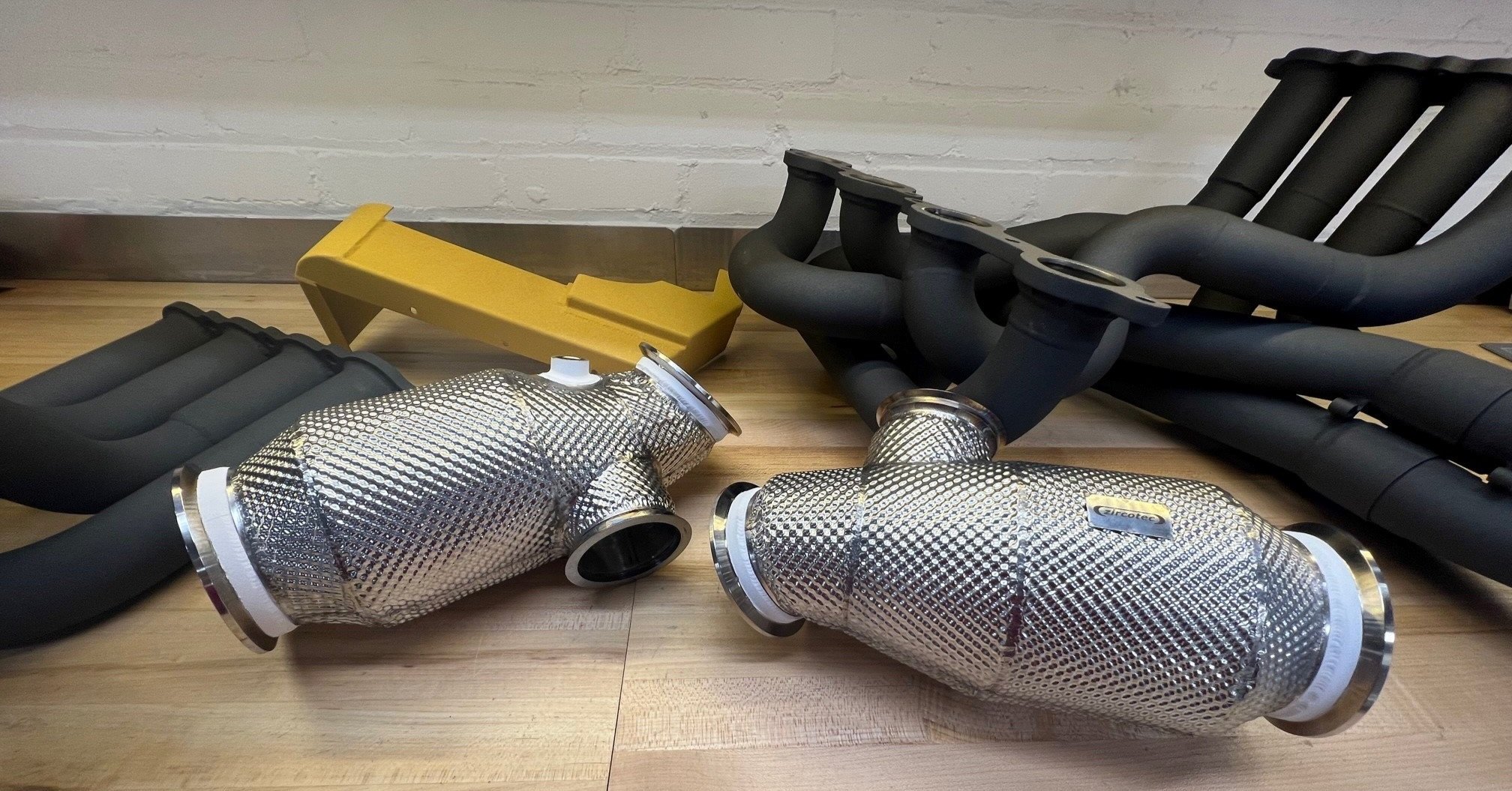The equal-length 180-degree exhaust crosses under the dry sump and results in a lot of tube stuffed next to the engine block. To mitigate heat issues, I decided to go with Zircotec's patented ThermoHold ceramic coating. The technology was created for nuclear reactors and then trickled down through F1, motorsports and then to us hobbyists. Most ceramic coatings consist of ceramic chips suspended in a polymer. They are applied with a spray gun and then baked (Zircotec also offers a similar lower-performance coating). ThermoHold is more akin to welding than painting. Zirconia ceramics are plasma sprayed at temperatures in excess of 10,000°C (18,000°F) travelling at nearly twice the speed using a water-cooled gun. Similar to welding, the part is shieled with argon gas. The resulting coat is 0.3mm thick layer and contains lots of small air pockets which further reduces heat transfer. Note that aerogel, the best known insulator, achieves its amazing insulation properties because it’s mostly composed of air pockets making it the lightest known solid. Unlike the smooth polymer-based finishes, ThermoHold has a texture similar to 220 grit sandpaper and can only be removed by grinding it off.
Robotic arm plasma spraying ThermoHold
Zircotec has significant intellectual property regarding the process which is highly sensitive to power fluctuations leading them to having their own electrical substation.
“There are a large number of parameters that influence the interaction of the plasma-spray feedstock with the plasma jet and the substrate, and these parameters can result in very wide variations in the final product (e.g. feedstock type and composition, feed-rate, plasma gas composition and flow rate, energy input, torch geometry, nozzle design, nozzle offset distance and substrate cooling). The Zircotec process ensures that these parameters are tightly controlled within pre-defined set points, thereby providing control over the quality of the final product.”
Preparation steps include cleaning with a strong detergent, masking the areas not to be coated and applying a metallic-based bond coat. A coat of ThermoHold Performance White which is good to 1,400 °C (2,552 °F) is then applied. An optional ThermoHold color coat which is good to 900 °C (1,652 °F) can then be applied.
The primary disadvantages are cost, the parts must be sent to England and that coating can’t be removed (this also makes it durable).
Given how long it took to fabricate the headers, I was terrified that they might get lost or damaged shipping them from Boston to the UK. Fortunately, I was able to freeload a ride and prearrange a quicker-than-normal turnaround. I dropped them off on Monday and pick them up on Friday.
I was leaning towards Performance White on the headers, but I decided to go with Performance Graphite. It matches my color scheme better and it will be less likely to show wear.
Zirocotec ThermoHold Performance Graphite
The catalytic converter assemblies will generate a lot of heat so I had Zircotec cover them with ZircoFlex SHIELD. The assemblies were; (1) plasma-sprayed with ThermoHold Performance White, (2) wrapped in fiber insulation and (3) enclosed in a hand-formed and welded 0.1 mm thick shield. This is the same process that they use on F1 cars and the workmanship, particularly on such a thin material, is outstanding. Unlike other dimpled materials that I’ve tried, you can easily handle the assemblies without denting the covering. All of this comes in at a price. Covering the small catalytic convertor assemblies cost more than double the cost to coat he headers and merge collectors.
ThermoHold Performance Graphite on the headers and merge collectors; ThermoHold Performance White, fiber blanket and ZircoFlex SHIELD on the catalytic converter assemblies; and ThermoHold Performance Yellow Gold on the heatshield
Given that the engine is out, the next step is to fabricate a heat shield between the dry sump and the tubes that cross-under it.




